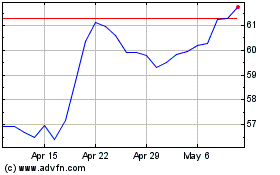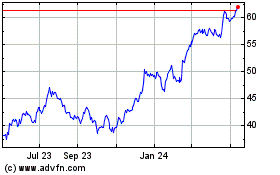By James R. Hagerty
When U.S. Army Air Corps pilot Richard Cooley woke up in a
French hospital in December 1944 and discovered he had lost his
right arm in a plane crash, he knew he would be all right.
"I would make a living," Mr. Cooley later wrote. "I would find a
wife. I would be happy. But I would probably never play football
again." For that, he wept.
Then he moved on. He graduated from Yale University, became
chief executive of Wells Fargo & Co., married four times,
taught business at the University of Washington, and excelled at
golf, tennis and squash. He batted up and down the hills of San
Francisco in a Mustang with a stick shift. He devised his own
method for tying a necktie; it involved using his left hand, his
prosthetic right limb and his teeth.
He attended Roman Catholic Mass virtually every day of his adult
life. He often declared himself the luckiest man he knew.
Mr. Cooley died Sept. 21 at his home in Seattle. He was 92 and
had been suffering from multiple myeloma.
As CEO of Wells Fargo for 16 years starting in 1966, he was
known for grooming talent. Among Wells alumni from his era who
became CEOs of other big banks were Richard Rosenberg ( Bank of
America), John Grundhofer ( U.S. Bancorp) and Frank Newman (Bankers
Trust). Mr. Rosenberg said Mr. Cooley had "a very special quality
of leadership." The former Bank of America chief added that he
usually lost when he played tennis with his one-armed
colleague.
Richard Pierce Cooley, known as Dick, was born Nov. 25, 1923, in
Dallas and grew up in the New York suburb of Rye. He was the eldest
of four children. His father headed public relations for New York
Bell Telephone. Although the family wasn't rich by Rye standards,
they belonged to the Apawamis Club, where young Dick played golf
and once met Babe Ruth in the shower room.
Sent to Catholic schools, Dick Cooley learned what he later
described as "the consequences of doing sinful things and ending up
in hell." He enrolled in Yale at age 16 and was a C student, more
interested in sports than studies. After struggling in a German
class, he looked for a major that didn't have a language
requirement and settled on industrial administration and
engineering. His mother barred him from philosophy courses.
"She did not want the materialism of Yale to make my religion
seem unimportant," he wrote in a 2010 memoir, "Searching Through My
Prayer List."
Playing end on the Yale football team meant conquering his
"physical fear of the game," he wrote, and "helped me face some of
the challenges and obstacles that came later."
World War II interrupted his studies. After pilot training, he
was sent to Europe in 1944. During a test flight over France, his
P-38 Lightning crashed. Although he managed to parachute to the
ground, the right-handed Mr. Cooley lost his right arm and spent a
year recuperating. He later repeatedly helped train other amputees
to ski and otherwise get on with their lives.
After he graduated from Yale in 1945, his father offered to send
him to Harvard Business School but he was eager to start a career
and declined, a decision he later regretted. "Charging ahead
somewhat impatiently was my style," he wrote.
He worked for a publishing company for three years, helping
manage the printing of magazines. Then he moved to San Francisco
and became a trainee at American Trust Bank, later acquired by
Wells Fargo. He rose rapidly there. Partly, he said, that was
because the bank had done little hiring during the Depression and
war years and so had few candidates to succeed its aging
leaders.
At 42, he was named CEO. He successfully expanded Wells Fargo
into southern California and built up a network of small foreign
offices from Paris to Tokyo. Those foreign offices generally didn't
perform well, he later said, blaming the "herd mentality" of
bankers for the 1970s fad of setting up overseas outposts.
At home, he had the embarrassment of a $21 million embezzlement
by a manager in the Beverly Hills office, discovered in 1981.
As he neared 60, Mr. Cooley felt he was burning out and noticed
"young lions nipping at my heels." He resigned from Wells in 1982
and became CEO of Seafirst Corp., a Seattle-based bank struggling
with losses on energy loans. Within a few months of taking charge
there, he agreed to sell Seafirst to Bank of America.
He also held board seats at the California Institute of
Technology, Rand Corp. and United Airlines.
In his later years, he qualified again as a pilot and flew his
own Beechcraft Bonanza around the country. He taught leadership
courses in an executive M.B.A. program at the University of
Washington. His style was to offer pithy advice -- such as "listen
more than you talk" -- and give examples from his business life. He
also brought in other executives and urged his students to quiz
them.
"He was extraordinarily humble and unassuming," said Bill Ayer,
a former CEO of Alaska Airlines who taught with Mr. Cooley at UW.
"If you didn't ask him about himself, he'd never tell you."
He continued golfing past 90 and quit only when he could no
longer swing his clubs.
His personal life was complicated. After having five children
with her, he divorced his first wife -- a decision he later blamed
on his selfishness and excessive focus on work. His second marriage
also ended in divorce, and his third wife died of cancer. In 2003,
he married the former Bridget McIntyre, who shared his love of
flying. His survivors include her, four children from his first
marriage, eight stepchildren, eight grandchildren, one great
grandchild and two sisters. A son, Sean Cooley, died of cancer in
2015.
Write to James R. Hagerty at bob.hagerty@wsj.com
(END) Dow Jones Newswires
September 30, 2016 12:06 ET (16:06 GMT)
Copyright (c) 2016 Dow Jones & Company, Inc.
Wells Fargo (NYSE:WFC)
Historical Stock Chart
From Mar 2024 to Apr 2024

Wells Fargo (NYSE:WFC)
Historical Stock Chart
From Apr 2023 to Apr 2024
